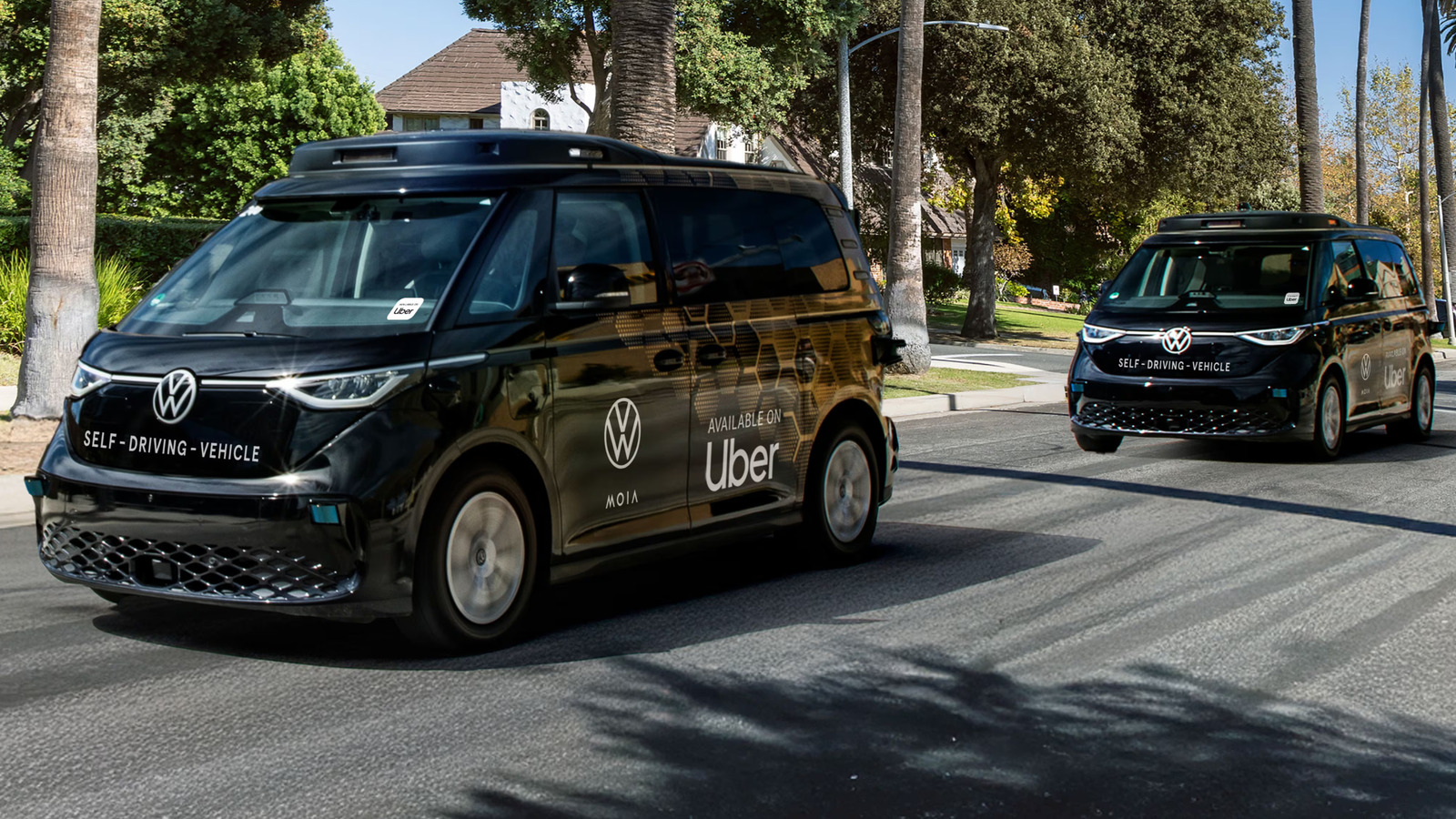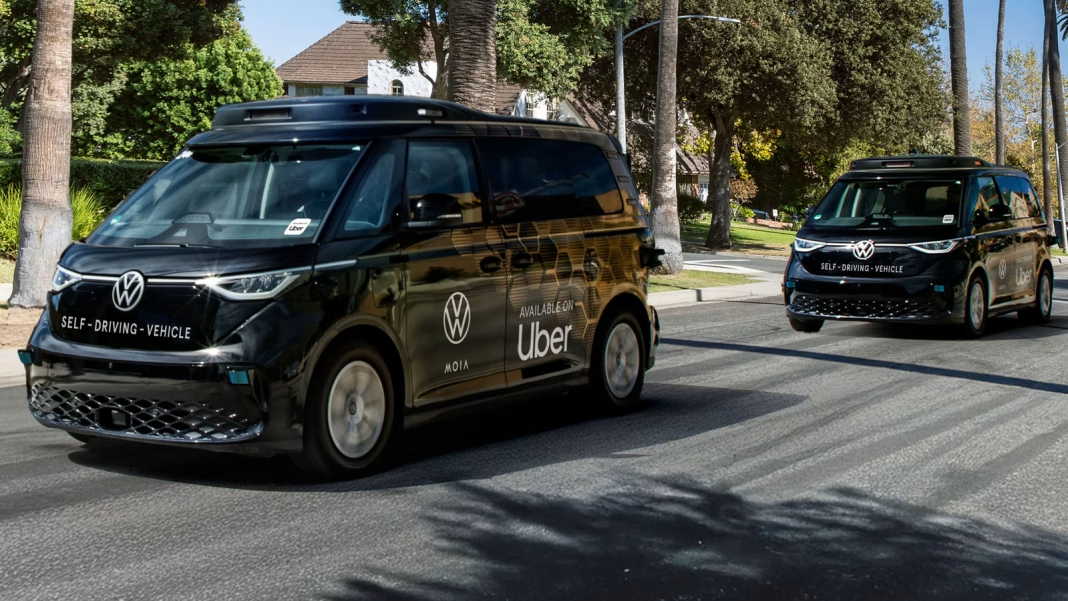Imagine hopping into a sleek, futuristic van that glides silently through the streets of Los Angeles, all while you sit back and enjoy the ride without a driver in sight. This isn’t just a dream anymore; it’s the exciting future that Uber is gearing up for with its new commercial autonomous driving taxi service, set to launch in late 2026. At the heart of this venture? A fleet of thousands of Volkswagen’s ID Buzz electric vans.
What Makes the ID Buzz Stand Out?
The ID Buzz isn’t just another electric vehicle; it’s a nod to Volkswagen’s iconic Microbus, reimagined for the modern age. With its retro-chic design and cutting-edge technology, it’s not only eye-catching but also environmentally friendly. The electric powertrain means zero emissions, aligning perfectly with the growing demand for sustainable transportation solutions. Plus, the spacious interior offers a comfortable experience for passengers, making it ideal for ridesharing.
Uber’s Vision for Autonomous Ridesharing
Uber has long been at the forefront of ridesharing innovation, and this new initiative marks a significant leap into the realm of autonomy. By integrating the ID Buzz into its fleet, Uber aims to create a seamless and efficient transportation network. The plan is to leverage advanced AI and sensor technology to navigate the bustling streets of LA, ensuring safety and reliability for passengers.
But why LA? The city’s diverse landscape and heavy traffic make it a perfect testing ground for autonomous vehicles. With a mix of urban and suburban environments, Uber can gather valuable data to refine its technology. This strategic choice could set the stage for expansion into other major cities in the future.
How Will This Impact the Ridesharing Landscape?
The introduction of autonomous vehicles like the ID Buzz could revolutionize the ridesharing industry. Imagine a world where you can summon a ride without waiting for a driver to arrive, or where surge pricing becomes a thing of the past because of the efficiency of autonomous fleets. This shift could lead to lower costs for consumers and increased accessibility for those who rely on ridesharing for transportation.
Moreover, the environmental impact cannot be overlooked. With thousands of electric vans on the road, Uber’s initiative could significantly reduce carbon emissions in urban areas, contributing to cleaner air and a healthier planet.
Challenges Ahead: What to Consider
While the prospects are thrilling, there are challenges to navigate. Public perception of autonomous vehicles remains mixed, with concerns about safety and the technology’s reliability. Uber will need to address these issues head-on, ensuring that potential riders feel confident in the safety of their autonomous rides.
Additionally, regulatory hurdles will play a crucial role in the rollout of this service. Collaborating with local governments and transportation authorities will be essential to create a framework that supports the safe integration of autonomous vehicles into existing traffic systems.
What’s Next for Uber and Volkswagen?
As we look ahead to 2026, the partnership between Uber and Volkswagen is one to watch. Both companies are investing heavily in research and development to ensure that the ID Buzz can operate safely and efficiently in a real-world environment. The success of this venture could pave the way for similar initiatives across the globe, potentially transforming how we think about transportation.
The big takeaway? The future of ridesharing isn’t just about convenience—it’s about smarter, sustainable solutions. Keep an eye on this space, because the launch of Uber’s autonomous taxi service could redefine urban mobility as we know it. Start thinking about how you might use this service when it arrives, and you’ll likely find yourself excited for the changes ahead.


